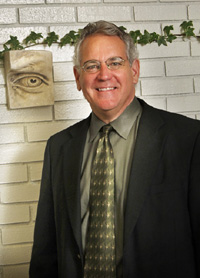Dr. Loren Knapp
Dr. Knapp said the following about Kinematic Self-Replicating Machines
“Kinematic Self-Replicating Machines runs the gamut of expounding the compressed, detailed aspects of theoretical models of nanotechnology and science to the practical, common sense notions of how to proceed in a world of ever-changing technologies that will (and does) affect us all. There are some very lucid presentations of the math in Section 5.9. Your writing style is very readable, as indicated in several sections where you introduce material in a simple and straightforward manner and in Section 5.11, where the dimensions of the issues are societal.With respect to Section 5.11 ‘Replicators and Public Safety’, you do a good job of briefly putting the potential of the technology into a societal perspective. It is certainly our intention at USC to deal with many of the issues raised in the book and hopefully to expand on them in meaningful ways. Dyson’s voice of concern (as with all the interesting excerpts used in the Chapter) frames the issues nearest and dearest to the doomsayers of this technology and are food for serious thought on the adventures we set out on in discovering new relationships of matter, energy and assembly at the nanoscale. Evolvability of self-replicating systems should be more than discouraged. The Foresight Guidelines are reasonable and thorough in their presentation. I’m not sure anyone should fully believe that they will be met, but they are a good start. I agree that ‘people of good will’ can influence greatly the regulation of a new field, as you rightly point out with respect to genetic engineering. Readable and thought-provoking…”
Dr. Loren Knapp is a cell and developmental biologist whose research at the Department of Biological Sciences at the University of South Carolina focuses on understanding the role of the cytoskeleton in cell interactions during the morphogenesis, histogenesis and biochemical differentiation of the integument. Cytokeratins and other elements of the cytoskeleton are intimately associated with cellular junctions, such as desmosomes, but little is known about how they are organized and function in these relationships with cell adhesion complexes.
Loren is using molecular, biochemical and immunological approaches to investigate how cytoplasmic interactions involving alpha and/or beta-type cytokeratins occur during the differentiation of skin. In vivo studies with mice and birds target the development, growth and differentiation of the epidermis and its derivatives (e.g. hair, scales, feathers), particularly the assembly and organization of cytokeratins with keratin-associated proteins. In vitro studies target the interactions of cytokeratins and other intermediate-sized filaments with cytoskeletal microfilaments, microtubules and the cell membrane in normal and transformed epithelial cells in culture.
He is also Dean for Undergraduate Studies in the Natural Sciences and Director of the Monoclonal Antibody Facility at the University of South Carolina (USC).
Loren is coauthor of A physiological evaluation of carbon sources for calcification in the octocoral Leptogorgia virgulata (Lamarck) in Journal of Experimental Biology, Biochemical Identification and Immunological Localization of Two Non-keratin Polypeptides Associated with the Terminal Differentiation of Avian Scale Epidermis in Cell and Tissue Research. and The Experimental Manipulation of Keratin Expression and Organization in Epithelial Cells and Somatic Cell Hybrids in Current Topics in Developmental Biology.
He received a Ph.D. in Biology from the University of Chicago in 1980. He is married with children and grandchildren, enjoys world travel, reading, music, art, and follows closely the impact of science and technology on modern society.
